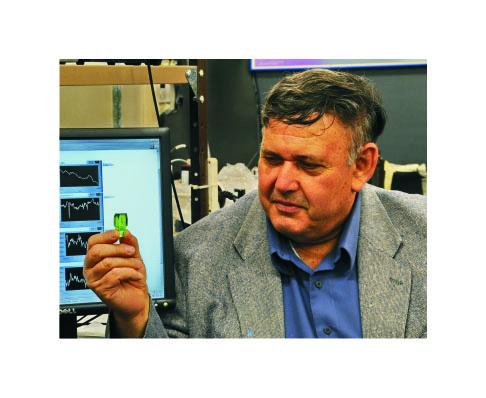Abstract:
The upper part of the human eccrine sweat ducts, embedded within the epidermis layer, have a well-defined helical structure. It was recently suggested that, as electromagnetic entities, the sweat ducts interact with sub-mm waves [Y. Feldman et al., Phys. Rev. Lett. 100, 128102 (2008)]. Although correlation between changes in the reflectance spectrum in this frequency range and physiological activities has been shown, a direct link between the electromagnetic reflection and the helical structure itself has remained to be established. The fact that the sweat ducts manifest natural homochirality is henceforth used to produce this link. We report the detection of circular polarization asymmetry in the electromagnetic reflection from the human skin at sub-THz frequencies in vivo. We compare the results to numerical simulations and to measurements of a fabricated metamaterial. We argue that the observed circular dichroism can be interpreted uniquely as the signature of the helical structure itself. By twisting reflected electromagnetic waves, the human skin exhibits properties which are usually discussed only in the framework of metamaterial science.;Notes:
Accession Number: 24827286. Language: English. Date Created: 20140515. Date Completed: 20150415. Update Code: 20150415. Publication Type: Journal Article. Journal ID: 101136452. Publication Model: Print-Electronic. Cited Medium: Internet. NLM ISO Abbr: Phys Rev E Stat Nonlin Soft Matter Phys. Linking ISSN: 15393755. Subset: IM; Date of Electronic Publication: 2014 Apr 25. ; Original Imprints: Publication: Melville, NY : Published by the American Physical Society through the American Institute of Physics, c2001-

